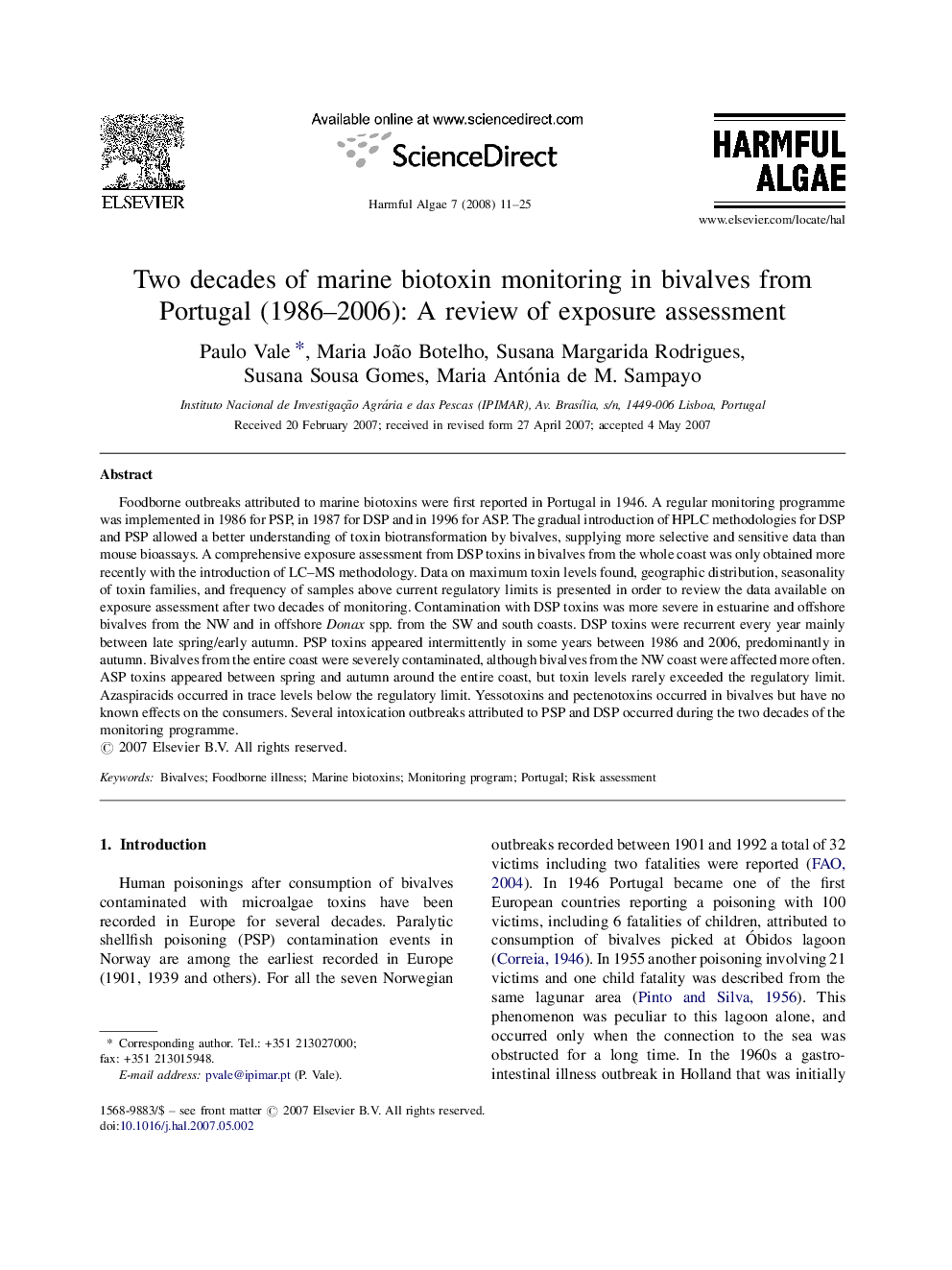| Article ID | Journal | Published Year | Pages | File Type |
|---|---|---|---|---|
| 4546087 | Harmful Algae | 2008 | 15 Pages |
Foodborne outbreaks attributed to marine biotoxins were first reported in Portugal in 1946. A regular monitoring programme was implemented in 1986 for PSP, in 1987 for DSP and in 1996 for ASP. The gradual introduction of HPLC methodologies for DSP and PSP allowed a better understanding of toxin biotransformation by bivalves, supplying more selective and sensitive data than mouse bioassays. A comprehensive exposure assessment from DSP toxins in bivalves from the whole coast was only obtained more recently with the introduction of LC–MS methodology. Data on maximum toxin levels found, geographic distribution, seasonality of toxin families, and frequency of samples above current regulatory limits is presented in order to review the data available on exposure assessment after two decades of monitoring. Contamination with DSP toxins was more severe in estuarine and offshore bivalves from the NW and in offshore Donax spp. from the SW and south coasts. DSP toxins were recurrent every year mainly between late spring/early autumn. PSP toxins appeared intermittently in some years between 1986 and 2006, predominantly in autumn. Bivalves from the entire coast were severely contaminated, although bivalves from the NW coast were affected more often. ASP toxins appeared between spring and autumn around the entire coast, but toxin levels rarely exceeded the regulatory limit. Azaspiracids occurred in trace levels below the regulatory limit. Yessotoxins and pectenotoxins occurred in bivalves but have no known effects on the consumers. Several intoxication outbreaks attributed to PSP and DSP occurred during the two decades of the monitoring programme.
